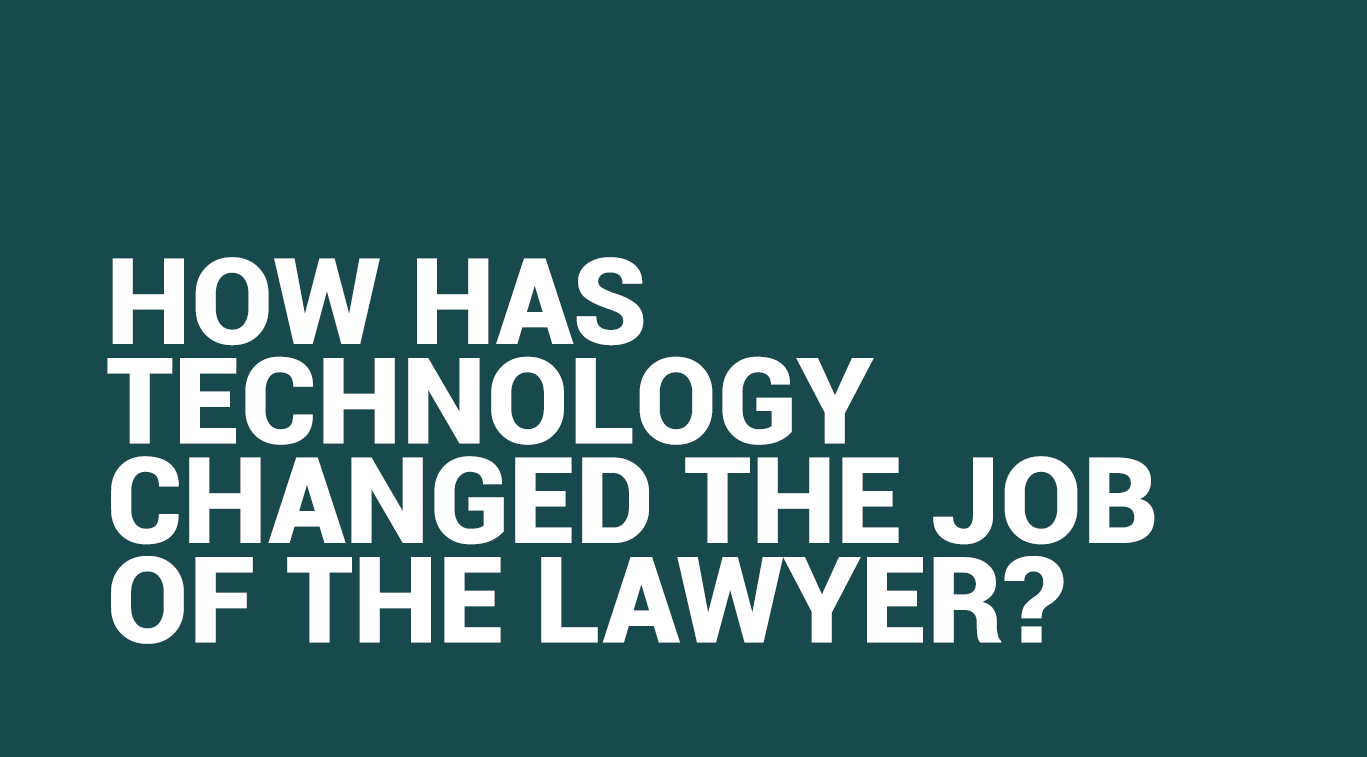The importance of social connections for well being

Written by Shrisha Sapkota
Blogger

Introduction
Human beings are inherently social creatures. As far back as we can trace, humans have travelled, hunted, and thrived in social groups. Social groups provide us with an important part of our identity, and more than that, they teach us a set of skills that help us to live our lives. Humans have a natural need for social connection and like feeling valued, cared for, and supported by others. Numerous studies demonstrate both the risks of social isolation and loneliness on mental health as well as the dire importance of human connection.
At one time, our very survival depended on trusting and supportive relationships. Fundamentally, it doesn’t matter how technologically sophisticated we become; emotional connectivity remains a core part of being human. We need each other, maybe not in the ways that characterised us evolutionarily, but for a need that remains essential for psychological survival.
The term “social connection” refers to a person’s positively experienced social relationships as an important aspect of their life. Social connection encompasses the relationships, networks or links that people have with other people or groups, whether these be with neighbours, family, friends, sporting or social groups. “Social connection” is about the “people we know; the friends we confide in, the family we belong to and the community we live in”. Another term referring to social connection is “belongingness”, which describes a basic human need to feel accepted and to feel part of something bigger, and can/tends to include intimate relationships. Finally, the term social connection can refer to any connections made with others. Therefore, social connection could encompass everything from connections with families and friends, to connections made at work or through different activities. The ability to develop social connections is also dependent on the context of a situation and an individual’s experience of social interactions with others in that situation.
A revealing sociological study showed that the modal number of close others (i.e., people with whom one feels comfortable sharing a personal problem) Americans claimed to have in 1985 was only three. In 2004 it dropped to zero, with over 25% of Americans saying that they have no one to confide in. This survey suggests that one in four people that we meet may have no one they call a close friend.
Importance of social connections
In the book, “Social” renowned psychologist Matthew Lieberman explores groundbreaking research in social neuroscience revealing that our need to connect with other people is even more fundamental, more basic, than our need for food or shelter. Because of this, our brain uses its spare time to learn about the social world, other people and our relation to them. The writer argues that our need to reach out to and connect with others is a primary driver behind our behaviour.
Psychologists past and present have argued that social connection is the primary psychological need and motivator essential for human development and survival. Early psychoanalytic theories view social groups and connections as important balancing factors that motivate the individual to curb innate aggressive drives. From a developmental standpoint, appropriate social interactions are often part of the key benchmarks for maturity across developmental stages. The ability to relate warmly to others helps the forming of unions and increases opportunities of receiving guidance. Theories on drive and motivation, such as the renowned hierarchy of needs by Maslow (1943), highlighted the importance of ‘love and belongingness’ in the hierarchy of motivation development. Maslow stated that social connections and relationships are basic needs that a human being requires to fully function as an individual. The humanistic and relational standpoint also reiterates that the self-actualised individual should be capable of strong feelings of empathy and affection for all human beings and is capable of greater love, deeper friendship, and more complete identification with others.
Research in the past have shown the positive correlation of “social connectedness” with emotional resilience, conflict management, life satisfaction, and self–esteem. Richards (2016) stated that despite an increase in income, the participants of his study were found to be happier when their social connections grew positively, which effectively meant that people did value social connections more as opposed to “income.” On the contrary, chronically lonely people showed negative health outcomes, including the aspect of “addiction,” be it to drugs, alcohol and others. One landmark study showed that lack of social connection is a greater detriment to health than obesity, smoking and high blood pressure.
Very recently, some governmental bodies are now beginning to acknowledge the role that connections with friends, family and community members can have in helping people feel that they belong and have a role to play in society.
On a community level, strengthening social connections and enhancing exchange of social support may increase a community’s ability to utilise its resources and solve problems. Several community-level interventions have shown how intentional network building and strengthening of social connections within communities are associated with enhanced community capacity and control.
The main benefits of social connections are that it provides a sense of belonging, support and gives a purpose. Having a sense of belonging to a community helps people be their true selves while embracing their most positive qualities. The community provides opportunities to give and gain support which gives meaning and purpose to life. When people are feeling down or struggling with something, having somebody to call and talk to can help them work through their emotions and make them feel safe.
Effects of social connections on mental health
According to self-determination theory, individual well-being is determined by motivations and goals which are tied to three specific innate psychological needs: competence, autonomy, and relatedness. Relatedness refers to the state of being connected to others family, friends, partners, etc. Humans have a need to belong, a motivation to bond with others in relationships that provide ongoing, positive interactions. Research shows that to perceive happiness, one needs to have relatedness with others, sense of competency with self and task entrusted, as well as a sense of autonomy in executing the task.
This idea of well-being leads to self-satisfaction and happiness, which encompasses a host of psychological benefits. The more individuals experience positive emotions, the more it will help them to broaden resources and optimise their performance in work and in life. To connect with this inner well-being, we need to broaden our:
- a) intellectual resources : developing our creativity and flexible thinking;
- b) social resources: developing and strengthening our ability to connect with others;
- c) physical resources: improving our health and coordination; and
- d) psychological resources: enhancing our resiliency and optimism.
Friendships offer several mental health benefits, such as increased feelings of belonging, purpose, increased levels of happiness, reduced levels of stress, improved self-worth and confidence. A study conducted at a free health clinic in Buffalo, New York found that respondents with insufficient perceived social support were the most likely to suffer from mental health disorders like anxiety and depression. Studies in humans have shown that being deprived of social contact can lead to emotional distress, but the neurological basis of these feelings is not well-known. Feeling part of social activity has been shown to reduce stress, and enhance self-esteem and cognition, thereby improving people’s health and well-being. However, social isolation, because of a lack of social connection, can result in a deterioration in well-being with negative consequence on health.
Studies have also shown that people who feel more connected to others in relationships tend to generate a positive feedback loop in communicating and maintaining healthy social and emotional well-being with others in the family, workplace and community. This decreases the propensity to antisocial behaviour, isolation behaviour or poor mental health.
Studies have also highlighted the role of mirror neurons that help in producing empathy, sympathy, compassion and a feeling of belongingness within or others, often by inducing pain in selves and/or others. This goes on to prove that the aspect of “empathy” does make a person take proper moral or humane decisions eventually increasing the feeling of belongingness while triggering an intent to help others. Psychological researchers have explained this phenomenon as reinforcement and vicarious learning.
Effects of social connections on physical health
Interestingly, it was found that people who maintain healthy social connections could produce more antibodies through their immune systems, which eventually help them to fight diseases and provide longevity to the body. The heart and blood pressure of people with healthy relationships respond better to stress. Strong social connections are associated with a healthier endocrine system and healthier cardiovascular functioning.
Strong social connectedness is associated with increased longevity, strengthening of one’s’ immune system, faster recovery from disease and, hence, a lengthening of one’s life. Furthermore, people having good social connections were found to have better eating and exercise habits, which could be the result of reinforcing healthy habits by friends.
Social connection during our time
Feeling socially connected, especially in an increasingly isolated world, is more important than ever. Despite the popularity of mobile communication and social networks, people are more socially isolated than ever before.
Some of the suspected factors for the rise in loneliness and social disconnect in America include:
- The number of adults living alone has nearly doubled over the last 50 years
- The number of single-occupancy households worldwide is now greater than ever in recorded history
- Reduction in marriage rates, smaller household sizes, and increased rates of childlessness
- Decreased community involvement, which is reflected by falling rates of volunteerism
- An increasing number of Americans reporting no religious affiliation
- Decreased need for face-to-face interactions due to technology and social media.
Social connection for lawyers
The personality characteristics that make lawyers good at their jobs also make them resistant to social connections. According to Dr. Richard’s extensive research on lawyer personality traits, using the Calliper Profile, lawyers score far higher or far lower than the general public on the following seven personality traits:
High scepticism: Exhibited through high levels of scrutiny, looking for hidden motives, refusing to give others the benefit of the doubt and questioning assertions.
High autonomy: Exhibited through a need for control, internal rather than external decision drivers and aloofness.
High abstract reasoning: A positive spin on this trait exhibits as someone who loves to analyse, solve problems and use their intellectual gifts. At the same time, a person with this inclination also loves to argue.
High urgency: This trait is good for getting things done but also presents as impatience.
Low sociability: Exhibits as private and unwilling to share one’s personal life and vulnerabilities. This makes social relationships awkward and unimportant. Dr. Richard specifically pointed out that being vulnerable signals trust to others and a failure to do so activates our threat response.
Low empathy: Empathy refers to an individual’s inclination to focus on the experience, goals, feelings, etc., of others rather than themselves. Low empathy is exhibited by a failure to understand the impact that one’s words and actions have on others.
These factors may lead to less socialisation, stress at work and burnout in lawyers as well. Law firm workflow solutions or legal software tools may assist law firm practice management which makes the tasks of lawyers easier and faster, due to which they can have more time for socialisation, which can lead to a better well-being.
Specifically on the work front, positive emotions and happiness are often a precursor of success and well-being, leading to the development of qualities that lead to success. In the work environment, individual well-being and satisfaction is tied to factors such as work demand, control and autonomy. It has been found that even in the face of high work demand and low sense of control, individuals may still report low stress levels and positive emotional states if they perceive sucient social support in the work environment; and this is regardless of individual differences of stress coping. This correlation of individual well-being and positive social support in the workplace, from supervisors or peers, can also have long-term effects on both physical and psychological health.
[1] http://ccare.stanford.edu/uncategorized/connectedness-health-the-science-of-social-connection-infographic/
[2] https://www.mindwise.org/blog/uncategorized/the-importance-of-social-connection/
[3] https://www.mindwise.org/blog/uncategorized/the-importance-of-social-connection/
[4] https://www.mindwise.org/blog/uncategorized/the-importance-of-social-connection/
[5] https://www.agapetc.com/why-connection-is-so-important-for-mental-health/
[6] https://www.psychologytoday.com/intl/blog/emotional-nourishment/201612/why-we-need-each-other
[7] https://www.psychologytoday.com/intl/blog/emotional-nourishment/201612/why-we-need-each-other
[8] https://www.psychologytoday.com/intl/blog/emotional-nourishment/201612/why-we-need-each-other
[9] https://www.ncbi.nlm.nih.gov/pmc/articles/PMC6603716/
[10] https://www.ncbi.nlm.nih.gov/pmc/articles/PMC6603716/
[11] https://www.ncbi.nlm.nih.gov/pmc/articles/PMC6603716/
[12] https://www.ncbi.nlm.nih.gov/pmc/articles/PMC6603716/
[13] https://www.ncbi.nlm.nih.gov/pmc/articles/PMC6603716/
[14] https://www.ncbi.nlm.nih.gov/pmc/articles/PMC6603716/
[15] https://www.ncbi.nlm.nih.gov/pmc/articles/PMC6603716/
[16] http://ccare.stanford.edu/uncategorized/connectedness-health-the-science-of-social-connection-infographic/
[17] http://ccare.stanford.edu/uncategorized/connectedness-health-the-science-of-social-connection-infographic/
[18] http://ccare.stanford.edu/uncategorized/connectedness-health-the-science-of-social-connection-infographic/
[19] https://www.penguinrandomhouse.com/books/212681/social-by-matthew-d-lieberman/
[20] https://www.penguinrandomhouse.com/books/212681/social-by-matthew-d-lieberman/
[21] https://www.penguinrandomhouse.com/books/212681/social-by-matthew-d-lieberman/
[22] https://www.cfps.org.sg/publications/the-singapore-family-physician/article/988_pdf
[23] https://www.cfps.org.sg/publications/the-singapore-family-physician/article/988_pdf
[24] https://www.cfps.org.sg/publications/the-singapore-family-physician/article/988_pdf
[25] https://www.cfps.org.sg/publications/the-singapore-family-physician/article/988_pdf
[26] https://www.cfps.org.sg/publications/the-singapore-family-physician/article/988_pdf
[27] https://www.cfps.org.sg/publications/the-singapore-family-physician/article/988_pdf
[28] https://www.cfps.org.sg/publications/the-singapore-family-physician/article/988_pdf
[29] https://www.frontiersin.org/articles/10.3389/fpsyg.2021.634621/full
[30] https://www.frontiersin.org/articles/10.3389/fpsyg.2021.634621/full
[31] https://www.frontiersin.org/articles/10.3389/fpsyg.2021.634621/full
[32] http://ccare.stanford.edu/uncategorized/connectedness-health-the-science-of-social-connection-infographic/
[33] https://www.ncbi.nlm.nih.gov/pmc/articles/PMC6603716/
[34] https://www.cfps.org.sg/publications/the-singapore-family-physician/article/988_pdf
[35] https://www.cfps.org.sg/publications/the-singapore-family-physician/article/988_pdf
[36] https://www.cfps.org.sg/publications/the-singapore-family-physician/article/988_pdf
[37] https://www.cfps.org.sg/publications/the-singapore-family-physician/article/988_pdf
[38] https://www.cfps.org.sg/publications/the-singapore-family-physician/article/988_pdf
[39] https://www.cfps.org.sg/publications/the-singapore-family-physician/article/988_pdf
[40] https://www.cfps.org.sg/publications/the-singapore-family-physician/article/988_pdf
[41] https://www.cfps.org.sg/publications/the-singapore-family-physician/article/988_pdf
[42] https://www.cfps.org.sg/publications/the-singapore-family-physician/article/988_pdf
[43] https://www.cfps.org.sg/publications/the-singapore-family-physician/article/988_pdf
[44] https://www.mindwise.org/blog/uncategorized/the-importance-of-social-connection/
[45] https://www.mindwise.org/blog/uncategorized/the-importance-of-social-connection/
[46] https://news.mit.edu/2020/hunger-social-cravings-neuroscience-1123
[47] https://www.ncbi.nlm.nih.gov/pmc/articles/PMC6603716/
[48] https://www.ncbi.nlm.nih.gov/pmc/articles/PMC6603716/
[49] https://www.cfps.org.sg/publications/the-singapore-family-physician/article/988_pdf
[50] https://www.cfps.org.sg/publications/the-singapore-family-physician/article/988_pdf
[51] https://www.frontiersin.org/articles/10.3389/fpsyg.2021.634621/full
[52] https://www.frontiersin.org/articles/10.3389/fpsyg.2021.634621/full
[53] https://www.frontiersin.org/articles/10.3389/fpsyg.2021.634621/full
[54] https://www.frontiersin.org/articles/10.3389/fpsyg.2021.634621/full
[55] https://www.cfps.org.sg/publications/the-singapore-family-physician/article/988_pdf
[56] https://www.cfps.org.sg/publications/the-singapore-family-physician/article/988_pdf
[57] https://www.cfps.org.sg/publications/the-singapore-family-physician/article/988_pdf
[58] https://www.frontiersin.org/articles/10.3389/fpsyg.2021.634621/full
[59] https://www.mindwise.org/blog/uncategorized/the-importance-of-social-connection/
[60] https://www.frontiersin.org/articles/10.3389/fpsyg.2020.00768/full
[61]https://www.hcbh.org/blog/posts/2021/january/the-importance-of-social-relationships-to-physical-and-mental-health/
[62]https://www.hcbh.org/blog/posts/2021/january/the-importance-of-social-relationships-to-physical-and-mental-health/
[63]https://www.linkedin.com/pulse/importance-connection-risks-loneliness-michael-callier-%E5%AE%B6%E5%88%A9%E4%BA%9A-/
[64]https://www.linkedin.com/pulse/importance-connection-risks-loneliness-michael-callier-%E5%AE%B6%E5%88%A9%E4%BA%9A-/
[65]https://www.linkedin.com/pulse/importance-connection-risks-loneliness-michael-callier-%E5%AE%B6%E5%88%A9%E4%BA%9A-/
[66]https://www.linkedin.com/pulse/importance-connection-risks-loneliness-michael-callier-%E5%AE%B6%E5%88%A9%E4%BA%9A-/
[67]https://www.linkedin.com/pulse/importance-connection-risks-loneliness-michael-callier-%E5%AE%B6%E5%88%A9%E4%BA%9A-/
[68]https://www.linkedin.com/pulse/importance-connection-risks-loneliness-michael-callier-%E5%AE%B6%E5%88A9%E4%BA%9A-/
[69]https://www.linkedin.com/pulse/importance-connection-risks-loneliness-michael-callier-%E5%AE%B6%E5%88%A9%E4%BA%9A-/
[70]https://www.linkedin.com/pulse/importance-connection-risks-loneliness-michael-callier-%E5%AE%B6%E5%88%A9%E4%BA%9A-/
[71]https://www.linkedin.com/pulse/importance-connection-risks-loneliness-michael-callier-%E5%AE%B6%E5%88%A9%E4%BA%9A-/
[72] https://www.cfps.org.sg/publications/the-singapore-family-physician/article/988_pdf
[73] https://www.cfps.org.sg/publications/the-singapore-family-physician/article/988_pdf
[74] https://www.cfps.org.sg/publications/the-singapore-family-physician/article/988_pdf
[75] https://www.cfps.org.sg/publications/the-singapore-family-physician/article/988_pdf
References
Ritu Kaushal, ‘Importance of Case Management Software’, Cogneesol (2021) at https://www.cogneesol.com/blog/legal-case-management-system-for-law-firms/
- Nerino Petro, ‘7 Reasons Why Small Law Firms Need Law Practice Management Software’ (2018), Thompson Reuters at https://store.legal.thomsonreuters.com/law-products/solutions/firm-central/resources/7-reasons-for-law-practice-management-software
- Insight Legal Software, Legal Practice Management Software’ at https://insightlegal.co.uk/solicitors-software/practice-management-system/?
- HSBC UK, ‘Legal Tech Analysis: Investment and Growth Strategies in Law Firms’ (2019) at https://www.business.hsbc.uk/corporate/-/media/library/business-uk/pdfs/hsbc-2019-legal-tech-report.pdf
- Chelsea Huss, ‘7 Benefits of Legal Practice Management Software in a Law Firm’, Centerbase (2020) at https://centerbase.com/blog/7-benefits-of-legal-practice-management-software-in-a-law-firm/
- Ibid
- Ibid
- Nicole Black, ‘2020 in Review: Legal Software For Working Remotely’, Abajournal (2020) at https://www.abajournal.com/columns/article/2020-in-review-legal-software-for-working-remotely
- Tim Baran. ‘Lawyers Working Remotely: Using Practice Management Software’, Rocket Matter (2014) at https://www.rocketmatter.com/featured/lawyers-working-remotely-using-practice-management-software/
- Ritu Kaushal, ‘Importance of Case Management Software’, Cogneesol (2021) at https://www.cogneesol.com/blog/legal-case-management-system-for-law-firms/
- Legal Futures Associate, LEAP Legal Software, ‘Key Considerations for Law Firms When Choosing Legal Software’, Legal Futures, (2021) at https://www.legalfutures.co.uk/associate-news/key-considerations-for-law-firms-when-choosing-legal-software
- Clio, ‘Legal Practice Management Software’ at https://www.clio.com/law-practice-management-software/
- Ibid
- Teresa Maitch, ’10 Things to Consider Before Choosing Case Management Software’, Clio at https://www.clio.com/uk/blog/choosing-case-management-software/








